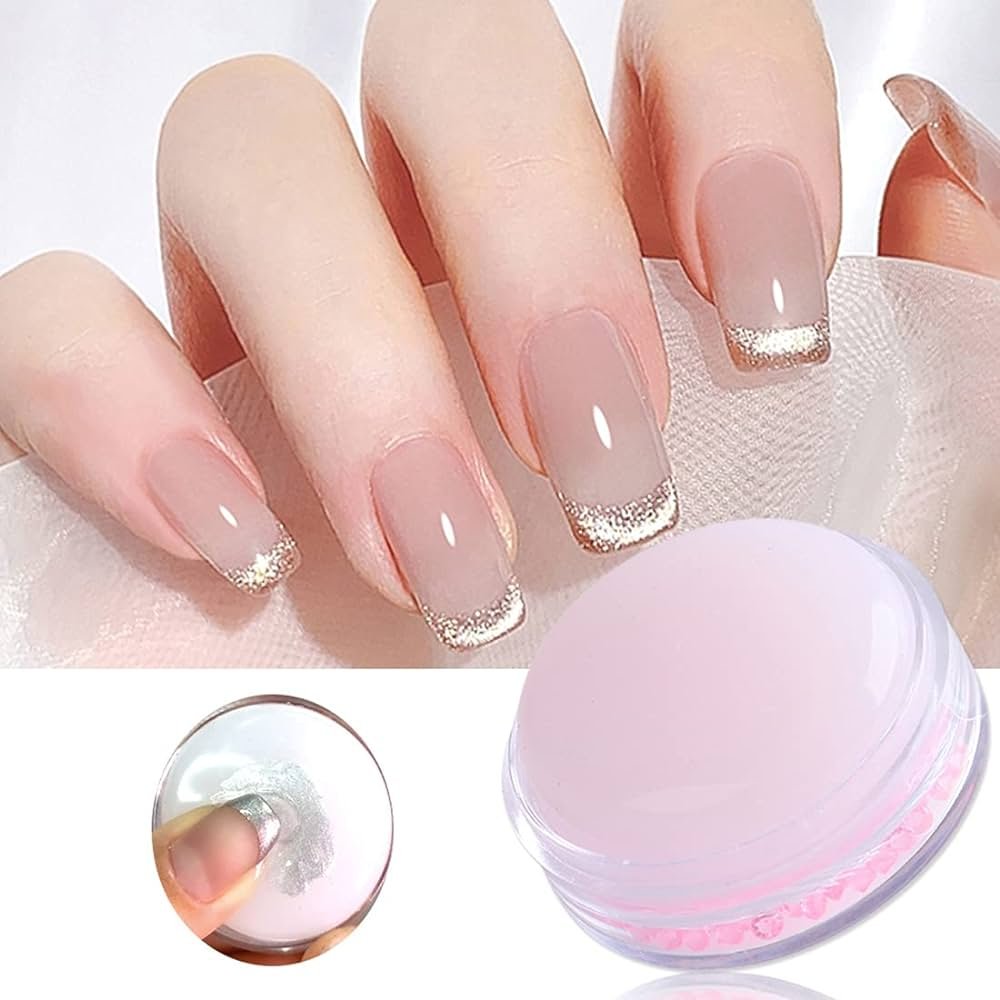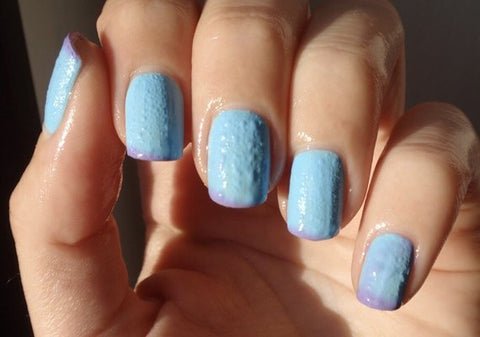Gel nail polish remains sticky due to inadequate curing under the UV/LED light, improper application, or old product. When gel polish is not exposed to the UV/LED light for the right amount of time, the chemical reaction does not complete, leaving the polish tacky.
Additionally, applying the layers too thick or not wiping off the inhibition layer can also result in stickiness. Furthermore, using expired or low-quality products can cause improper curing. It’s essential to ensure adequate curing time and proper application techniques to avoid sticky gel nail polish and achieve a flawless and durable finish.
Having perfectly manicured gel nails can elevate your style and boost your confidence. However, dealing with sticky gel nail polish can be frustrating and ruin the entire manicure experience. The sticky texture can attract dust and debris, causing smudges and imperfections. We will explore the reasons behind sticky gel nail polish and provide helpful tips to prevent and fix this common issue. Read on to learn how to achieve long-lasting, flawless gel nails without the sticky setback.
Contents
- 1 Understanding Gel Nail Polish Stickiness
- 2 Factors Contributing To Gel Nail Polish Stickiness
- 3 Overcuring And Undercuring Of Gel Polish
- 4 Environmental Factors Affecting Gel Nail Polish Stickiness
- 5 Solutions To Tackle Gel Nail Polish Stickiness
- 6 Professional Tips To Prevent Gel Nail Polish Stickiness
- 7 Conclusion
Understanding Gel Nail Polish Stickiness
Gel nail polish is a popular choice for many individuals seeking long-lasting, chip-free manicures. However, there are times when gel nail polish remains sticky even after curing. Understanding the factors behind gel nail polish stickiness can help in achieving a flawless and durable manicure. In this blog post, we will delve into the definition and characteristics of gel nail polish, as well as the process of curing gel nail polish to uncover why stickiness may occur.
Definition And Characteristics Of Gel Nail Polish
Gel nail polish is a type of nail polish that is cured under a UV or LED lamp to achieve a durable, glossy finish. Unlike traditional nail polish that air-dries, gel nail polish requires a curing process to harden and set. The characteristics of gel nail polish include its ability to resist chipping, cracking, and peeling, making it a preferred choice for long-lasting manicures.
The Process Of Curing Gel Nail Polish
When applying gel nail polish, the curing process is crucial to ensure a long-lasting and non-sticky finish. The steps involved in curing gel nail polish include the application of a base coat, followed by layers of colored gel polish and a top coat. After each layer is applied, the nails are cured under a UV or LED lamp for a specific duration to harden the gel and create a durable finish. Proper curing is essential to prevent stickiness and achieve a smooth, glossy appearance.
Factors Contributing To Gel Nail Polish Stickiness
When gel nail polish remains sticky, it can be frustrating for both the nail technician and the client. Understanding the factors contributing to gel nail polish stickiness is crucial for achieving optimal results during the nail application process. By identifying the root causes, it becomes possible to prevent and resolve this common issue effectively. In this section, we will delve into the influences of improper application techniques and the impact of low-quality gel nail polish products.
Influence Of Improper Application Techniques
Improper application techniques can significantly contribute to gel nail polish stickiness. The following are common mistakes that might lead to this issue:
- Application of thick layers: Excessive application of gel polish can hinder proper curing, resulting in stickiness.
- Insufficient curing time: Inadequate exposure to the curing lamp doesn’t allow the gel polish to set completely, leading to stickiness.
- Unclean or oily nail surface: Failing to prep the nail properly can cause poor adhesion and eventual stickiness of the gel polish.
Impact Of Low-quality Gel Nail Polish Products
Using low-quality gel nail polish products can also contribute to stickiness. Inferior products may exhibit the following characteristics:
- Inconsistent formulation: Low-quality gel polishes may contain subpar ingredients that do not cure uniformly, resulting in sticky layers.
- Poor adhesion properties: Inferior adhesion can lead to gel polish not adhering properly to the nail bed, resulting in a sticky finish.
- Inadequate curing properties: Some low-quality gel polishes may not cure efficiently under standard curing conditions, leading to persistent stickiness.
Overcuring And Undercuring Of Gel Polish
Gel nail polish has become a popular choice for many individuals seeking long-lasting, durable nail color. However, one common issue that users may encounter is the sticky residue that sometimes remains after the curing process. This stickiness can be caused by several factors, with overcuring and undercuring of gel polish being primary contributors.
Exploring The Impact Of Overcuring On Stickiness
Overcuring, or subjecting the gel polish to an excessive amount of UV or LED light during the curing process, can have detrimental effects on the final result. When gel polish is overcured, the molecules within the polish can become overly cross-linked, leading to a hardened, tacky layer on the surface. This tackiness not only affects the aesthetic appeal of the nails but also makes it uncomfortable for the wearer.
Understanding The Consequences Of Undercuring
Undercuring, on the other hand, refers to not exposing the gel polish to enough curing time or intensity. This can leave the polish in a semi-cured state, resulting in a sticky, soft layer that is prone to smudging and denting. Additionally, undercuring may also lead to decreased adhesion and increased susceptibility to chipping or peeling, compromising the longevity of the manicure.

Environmental Factors Affecting Gel Nail Polish Stickiness
Gel nail polish is a popular choice for achieving long-lasting, glossy nails. However, sticky residue after curing can be a common issue. Understanding the environmental factors affecting gel nail polish stickiness can help nail technicians and enthusiasts address this problem effectively.
Influence Of Temperature And Humidity
Temperature and humidity levels play a critical role in the curing process of gel nail polish. Excessive heat can lead to rapid polymerization, resulting in a sticky layer on the surface of the nail. On the other hand, low temperatures or low humidity can slow down the curing process, leaving the gel polish tacky. Maintaining a controlled environment with adequate ventilation and moderate temperatures is essential for achieving optimal curing and minimizing stickiness.
The Impact Of Uv Exposure On Stickiness
UV exposure can significantly affect the stickiness of gel nail polish. Prolonged exposure to UV light, especially in the final curing stage, can intensify stickiness. However, insufficient UV exposure can also lead to incomplete curing, resulting in tacky gel polish. Utilizing the recommended UV lamp and following the manufacturer’s curing guidelines is crucial in ensuring proper polymerization of the gel polish without excessive stickiness.
Solutions To Tackle Gel Nail Polish Stickiness
Dealing with sticky gel nail polish can be quite frustrating, but there are effective solutions that can help you achieve a flawless, non-sticky finish. From proper nail preparation techniques to utilizing high-quality gel nail polish products, implementing the following strategies can transform your gel manicure experience.
Proper Nail Preparation Techniques
One of the crucial steps in preventing gel nail polish from remaining sticky is to ensure proper nail preparation. Before applying gel polish, it’s essential to follow these preparation techniques:
- Cleanse the nail: Use a lint-free wipe and alcohol or a specialized nail cleanser to thoroughly clean the nail surface, removing any oils or residue.
- Buff the nails: Gently buff the nails with a nail buffer to create a smooth, even surface for the gel polish to adhere to.
- Push back cuticles: Use a cuticle pusher to push back the cuticles, ensuring that the gel polish can be applied evenly along the nail bed.
- Avoid over-preparation: While it’s important to prepare the nails, over-preparation, such as excessive buffing, can lead to sensitivity and irritation.
Utilizing High-quality Gel Nail Polish Products
Choosing high-quality gel nail polish products is paramount in preventing stickiness and ensuring a long-lasting, professional finish. When selecting gel polish products, consider the following factors:
- Professional-grade formulations: Opt for gel nail polish products from reputable brands that offer professional-grade formulations, as they are formulated to provide optimal adhesion and durability.
- Compatibility with curing lamps: Ensure that the gel polish is compatible with the type of curing lamp you are using to avoid potential curing issues that can lead to stickiness.
- Storage and handling: Properly store and handle gel polish according to the manufacturer’s guidelines to maintain its integrity and prevent premature curing or stickiness.
By adhering to these nail preparation techniques and selecting high-quality gel nail polish products, you can effectively tackle gel nail polish stickiness and achieve a flawless, long-lasting manicure.
Professional Tips To Prevent Gel Nail Polish Stickiness
Professional Tips to Prevent Gel Nail Polish Stickiness
Recommendations For Correct Curing Times
Proper curing of gel nail polish is crucial to avoid stickiness. Curing times can vary based on the type of UV or LED lamp used. Ensure to follow the manufacturer’s instructions for the specific gel polish brand being used. Moreover, it’s essential to apply thin, even layers of gel polish to ensure efficient curing. Avoid thick coats that may not cure properly, leading to stickiness.
Advice On Environmental Control During Application
Controlling the environment during gel polish application is vital to prevent stickiness. Maintain a consistent temperature and humidity in the application area. Extreme temperatures can affect the curing process, leading to tacky gel polish. Also, minimize exposure to direct sunlight during application to prevent premature curing, which can also result in stickiness.
Conclusion
Knowing the reasons behind sticky gel nail polish is essential for a flawless manicure. By understanding the causes – such as inadequate curing, old polish, or not using a primer – you can take the necessary steps to prevent stickiness and enjoy long-lasting, salon-quality results.
Your nails will thank you.

